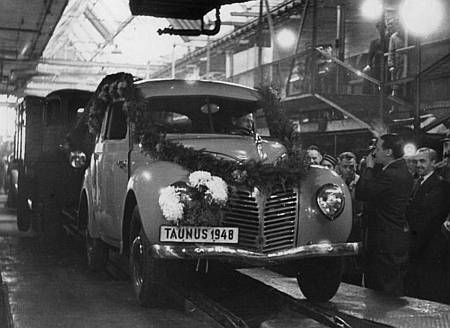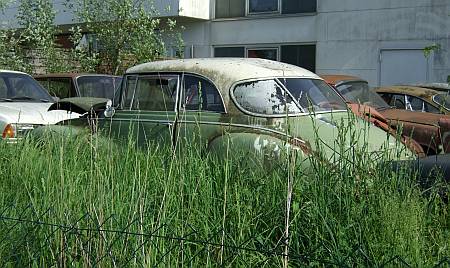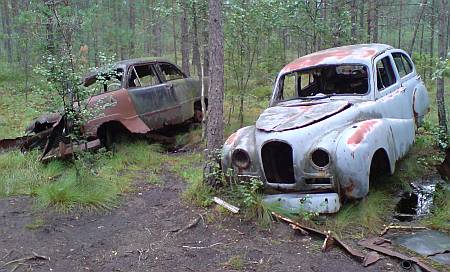

Left: Ford factory, Köln,the first Ford Taunus model
after the war. Photo:Unknown,
Nov. 23, 1948. Bundesarchiv Bild
183-2005-0722-512.
Rechts: Volkswagen factory,
Wolfsburg, Model 412 on the assembly line. Photo: Lothar Schaak, Aug. 22, 1973.
Bundesarchiv B145 Bild-F040733-0002.
These files are licensed under the Creative Commons
Attribution-Share Alike 3.0 Germany license.
Introduction: The “Oldtimer”
(Veteran, vintage and classic cars)-DVD of Historicmedia
In 2011, the automobile celebrates it’s 125th birthday. In
the beginning it was an admired – and sometimes also feared – rarity, then a
toy of the rich, before it became the dream of the millions. In
This DVD shows more than 16.000 images of
veteran, vintage and classic cars, especially contemporary photos, advertising
and documents. Lots of photos from veteran and classic cars can be found in the
internet today: the treasures of proud car owners, cars offered for sale, shot
from every side, photos of veteran car meetings and rallyes,
and from museums. In a time of quickly improving digital cameras and a flood of
digital images these photos are much more frequent and of a better quality than
ever before. But never the less: All these photos of veteran cars are no
“veterans” by themselves, these photos are new, the cars shot have been
photographed as “veterans”.
Once at the flea market, somebody told me about
the new veteran car photos compared to the old contemporary ones, we just were
looking through: “They are dead”. And indeed, the old photos do not show the
cars as “veterans”, removed from everyday’s life and
prepared as collector’s pieces, but as quite new, as symbols of modernity and
of progress, as something which had brought a great change to it’s owner’s life. And they show these cars together with
the people of their time, for whom these cars belonged to their own life and
not to the life of their parents and grandparents.
That means, these photos belong to
the time „when the oldtimer still were young“. And
this is meant in a double sense, because in German the English word “oldtimer” is used to speak of old cars, not of old people.
And the people, who are to be seen beside of the car, now mostly are –
depending from the age of the photos – “oldtimer”
themselves (in the English meaning of the word) or let us hope they at least
became, even if they are no more alive today.
About one half of the photos on the
DVD are private shots from the author’s archive. They demonstrate the proud of
the owner having realized their dream of a car. Owner (or just: drivers) and
co-drivers pose together with the object of their desire, arrange themselves
with the car (see Chapter 6 [in German]: Mein Auto und ich: Das Auto im privaten Foto).
On many photos, the people
demonstrate that they can dispose of the car: they are not just sitting in the
car, but on top of the front lid, place their kids or dogs on top of the car;
or when standing aside, put their hand at the car, in one case at least the
hat! Many photos show the cars like a member of the family; sitting at a picknick, the car is placed in the picture as taking part.
The car was closely connected to the “most beautiful time in the year”, holiday
and vacation. The car was the instrument that gave the opportunity to go
abroad, spend a beautiful vacation free of all constraints of public transport.
And the photos are showing: we have been there; we have been there by car –
look at us and our car in
The other half of the DVD’s images
is formed by photos from professional photographers, which now are kept in
public archives (the German Federal Archive with it’s
main office in
The photos have been classified in eight periods, according to the great
breaks in German history – and that in most cases also means the history of
cars in
Period 6 comprehends the years after the war up to the beginning of the
“Wirtschaftswunder” (“enonomic
miracle”), the quick rise of
Cars belonging to period 7 are those with growing tailfins in the late
1950ies and at its end those which already get over that fad. Above all, in
Photos showing motorcycles and racing cars are presented separately from
the chronological arrangement in particular folders. Furthermore, there are
folders containing advertisements, classified ads, documents, reports and
notices, greeting cards, cartoons… And we escort the cars “from the cradle to
the grave”, from the assembly line to the auto graveyard. Thus, there have been
added quite new photos to this DVD as well showing cars – “veterans” of our
times – at the auto graveyard: Sleeping Beauty waiting for a kiss or already
final destination?


Left: Classical cars
anywhere in Bavaria. Auto Union 1000 (1959–1963), on it’s left Peugeot 304 (1978–1983)
Right: Kyrkö Mosse, Sweden, Car cemetrery in the forest. Ford 12 M (1952–1956; left) und Saab 93 (1956–1959; right)
Impressum (Home) Datenschutzerklärung